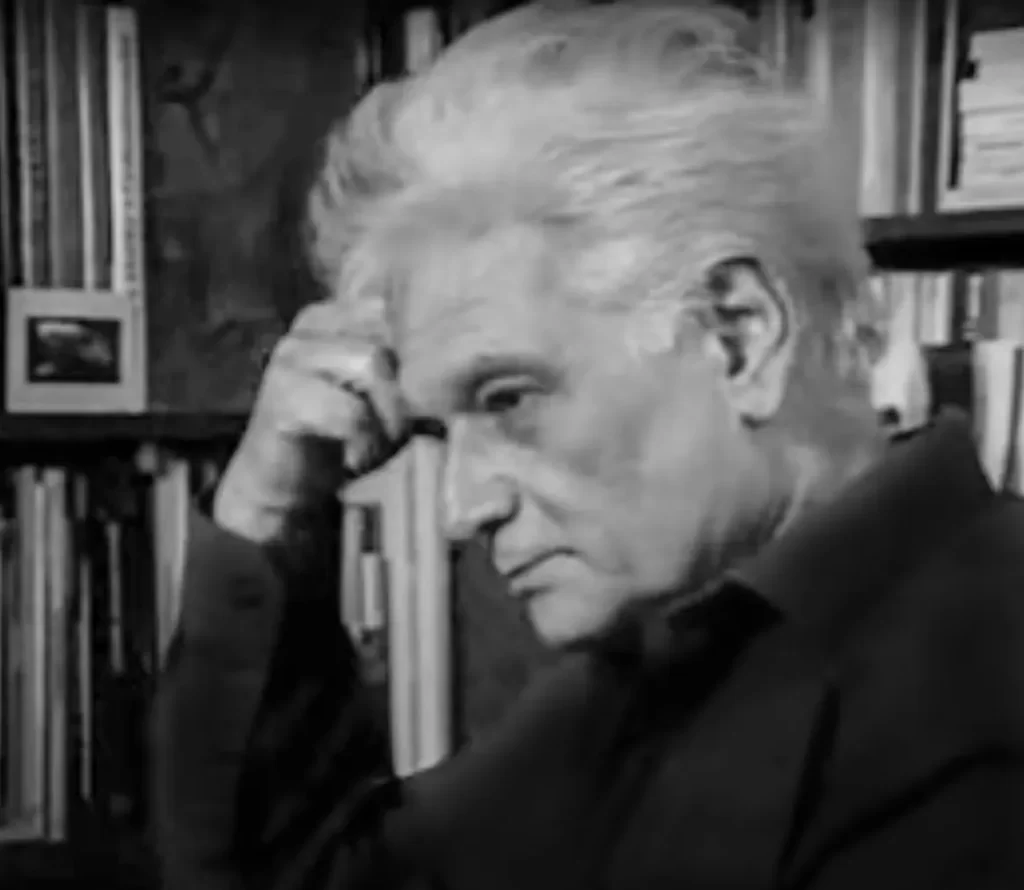In this article we are going to comment on Pierre Delain’s words regarding the relationship of the French philosopher Jacques Derrida with photography. Pierre Delain is the author of an incredible website, “idixa.net” (only in French), where Derrida’s thought is articulated with a multitude of fields of knowledge through hyperlinks in a rhizomatic reading proposal.
According to Delain, Derrida began to be interested in photography from 1985, motivated by his changing relationship with journalistic media. (For in fact, as Delain reminds us, Derrida until 1979 forbade any publication of his image): “at the moment when he let the clichés invade the scene, he began to be interested in photography as a theoretical object”
Derrida’s photography, an art without voice

Delain indicates us first of all that Derrida separates the arts in two families. On the one hand the philosopher distinguishes the arts without voice: photography, drawing, painting. On the other hand he considers the arts that mobilize words: cinema, theater, etc. For Derrida, if there were an art of the photography, then it would be advisable rather to say nothing about it, and to let this art express itself: “to let the optical apparatus reveal a truth which would expose itself in the system of its functioning, in the process of its development”. For Derrida, always according to Delain, the photography is associated to an enjoyment, to an unstoppable movement.
Thus, as in this context no word is pronounced in relation to the photography, it is to the spectator who remains the task of the enunciation in front of the image, this one understood as trace, imprint.
Derrida considers the work Droit de regards, by Marie-Françoise Plissard, as a masterpiece, and this thanks to “the absence of any discursivity or expressiveness”.
The photography, a medium which is silent
For Derrida, and always according to Delain, photography makes art when it is silent: “it has its way of ordering words. But its essence is to be silent”. The essence of photography is the gaze, and silence: “As such, photography is a silent object, irremediably devoid of meaning and explanation, irreducible to the verbiage by which we try to frame it.
Photography and psychoanalysis.
Delain indicates to us that Derrida comments on the part of the work of Walter Benjamin, The work of art in the time of its technical reproducibility, where Benjamin underlines the fact that the cinema appears at the same time as psychoanalysis. For Derrida, this is also valid for photography, because as much photography as cinema functions outside language.
Derrida and the Photograph that looks at us
For Derrida, even if we are the ones who look at the photograph, it is above all the photograph that looks at us, because the faces shown by the photograph were there before us, like spectres. It is that for Derrida the punctum of Roland Barthes, because it opens the singularity of a world. For Derrida, in the same way as for Roland Barthes, the photography is referential (it points out towards a referent), but that for Derrida, is valid for any image and for any speech.
Uniqueness, singularity
In Prégnances, Lavis de Colette Deblé. Paintings (p17), Delain indicates us that Derrida compares the liquid in which the negative of the analogical photography reveals itself to the amniotic liquid. What is born then, in the same sensitive paper, without separation, blind, is a trembling and silent truth, an untouchable-intangible truth, soaked of memory, carnal and spectral, delivered to the caress, left to interpret.
Whether we reproduce the photograph as many times as we want, there will always remain this unique moment: when the light, in the photographic bath, has inscribed itself.
Barthes’ punctum is elusive, ghostly. Even as a concept, it remains quite other, irreducible to knowledge. What touches me in a photograph? A unique, singular, irreplaceable mark. This mark outside the field takes me elsewhere, outside the code.
And yet, like cinema, photography is an art form structurally destined to be reproduced. It will have contributed to destroy the religious, ritual and cultural value of the irreplaceable work.
Photography delays death
The photography is, one says, instantaneous. But by structure, as soon as the camera is triggered, it produces a delay. There is always delay, spacing, difference. It is this permanent delay, incalculable, which gives the most to think about. By lodging itself in this gap, the work protests against the death sentence. Each photo carries an recognition of debt to death, and also the dream of a reprieve, beyond mourning. When, in a series, it calls for another, or when, through a photograph, we relate to ourselves, we are not only delaying a disappearance to which we are condemned. What we let come in the time of the suspense comes in addition to the life.
Curated videos, Jacques Derrida and Photography
Curated articles on Derrida and photography
Spectral Bodies: Derrida and the Philosophy of the Photograph as Historical Document, by Nick Peim.
Unsettling Photography: Kafka, Derrida, Moses, by Gerhard Richter.
Between Translation and Invention, The Photograph in Deconstruction, by Gerhard Richter.